Ah, the trusty pullup. Once a staple of every child’s PE class, it has fallen by the wayside as physical education in schools has declined. So even though pullups are still one of the best exercises you can do, for many people they’re nothing more than a distant memory of being yelled at by a drill sergeant-like PE teacher in a dusty old gymnasium. That’s how it was for Jen Meehan when she became reacquainted with pullups at a StrongFirst SFG Level II certification in 2013. (Pullups and the pistol are now part of the SFB certification.) Yet between then and now, she has not only gotten back on the bar for bodyweight pullups, but progressed to a 24kg weighted rep when she tamed the Iron Maiden Challenge in 2015, and can now pull a 36kg kettlebell for two consecutive reps. In this interview, Jen shares how she went from zero bodyweight reps to adding weight, the accessory exercises that developed her core and grip strength, and the mental techniques that propel her pullup feats.
What motivated you to try weighted pullups?
I saw some strong ladies doing weighted pullups at an SFG Level II certification and thought, “I want to do that.” When I first started, I couldn’t do any. But with patient work on the fundamentals, I progressed to a few shaky bodyweight reps. My confidence and skill improved with more practice, and, once I could do ten solid reps, I started adding weight. I’d decided to work towards getting 24kg as part of the Iron Maiden Challenge.
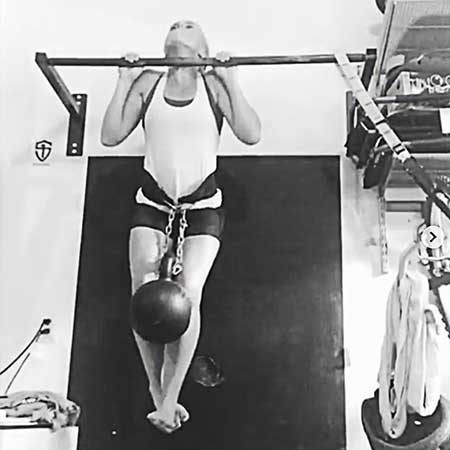
There are a lot of pullup programs out there. What’s your go-to plan?
I experimented a lot before settling on a three-day-a-week plan: 30-20-10, for
The first day I’d complete 30 bodyweight reps. That could be three sets of 10, or 13, 10, and 7—anything as long as I got 30 total. The second day, I’d do a 20-rep scheme, such as four sets of five. One of my go-to sessions was a warm-up set, five reps with the 16kg kettlebell, two sets of five at 18kg, and the final set of five at 16kg again.
Then on the third day, I’d reduce the volume, but increase the weight to do 10 reps. This involved sets of one or two in which I really focused on using tension techniques and maintaining the integrity and quality of each repetition. I might start with two reps at 20kg, another two at 24kg, two one-rep sets at 28kg, one rep at 32kg, another at 28kg, and the final two back down to 20kg. I’m still using a version of this plan today, and it has helped me to pullup a 36kg kettlebell for two reps.
When you started adding weight, did you notice any technique issues and if so, how did you correct these?
When you add weight, the tendency is to start looking up, particularly at the top when you try to get over the bar. If you do this, you begin to peel away from the bar, losing the hollow position that keeps your body linked up—a must for solid pullups. Think about what happens if you look up while planking: your tension decreases. Same goes for a pullup—it’s a moving plank that goes over the bar.
Placing the weight on my foot helped me nail the required hanging hollow position. I focused on pulling my toes up to the ceiling while keeping my glutes tight and my rib cage connected to my hips. Plus, it prevented me from using any leg momentum to get over the bar. By taking away any freedom to compensate, I earned my strength with a solid groove. If you have
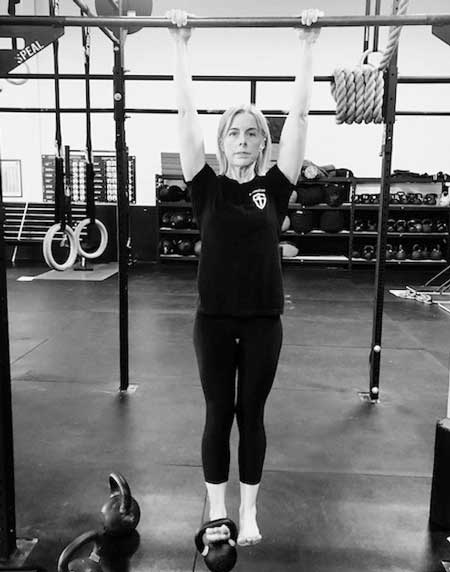
Working on my setup has also been crucial. You need to secure the belt properly and decide what feels good as far as chain length. This is something that varies, so find your strongest setup.
After playing around, I found that my best spot was to have the kettlebell above my knees, in what I call the “nest” of my thighs. That creates the feeling of being in the hollow hold. As the weight got bigger and heavier, I had to adjust the chain length again because the kettlebell would hang below my knees. Some days all I’ll do is
When you were training for the Iron Maiden Challenge, how did you work in the press and pistol?
They were part of my three-day plan. For the first day, I would do high rep sets of single-leg squats and hold a
The same thing applied to my pressing. I usually used double kettlebell for my volume day—say four sets of five reps with 16kg. For the 10-rep scheme, I’d do heavy singles, moving up from 18 to 20 to 24kg. Sometimes I’d perform three sets of 10 single-arm presses with a 12kg kettlebell to build endurance. As with the pistols, I didn’t do heavy presses and pullups both on the same day.
With all three of the Iron Maiden lifts, I got to a point where what I had planned to do on a specific day didn’t matter if I wasn’t feeling right. Say I was going for two pullups with a 24kg. If I did the first one and something felt off, I’d drop to 20kg for the second. You must listen to what your body is telling you. Sometimes you need to regress to progress.
When a beginner comes to you asking for help getting to weighted pullups, what progression do you have them follow?
My first goal is to get them to at least ten bodyweight reps before we add any weight. To do that, we start on the ground with the hollow hold, which was essential for me and is still something I practice a lot. First, I’ll have them just do the exercise itself, and once they’ve got it down, we’ll move on to them holding a dowel to mimic gripping the pullup bar. Then we’ll progress to standing, and after that to the bar itself, where we’ll work on hand position and grip, hanging, and replicating the hollow hold. Then, they practice.
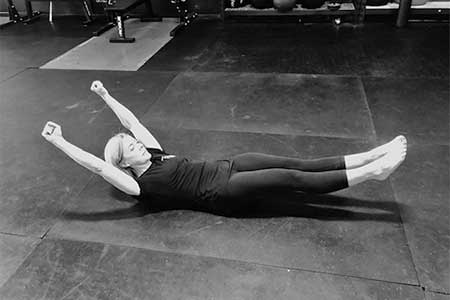
Other training techniques I
Once they’ve got ten clean bodyweight reps, I’ll have them put a small weight on their foot. If for some reason that hurts, we might progress to using the belt right away.
Then it’s a matter of getting used to some volume while we slowly increase the weight. I have other people use the same three-day approach I’ve found to work well. Once they can get to four sets of five reps with say 8kg—which could take several
As you started testing your pullup with heavier weights, how did you improve your grip strength?
I did a lot of carries. I’d carry a pair of 20 or 24kg kettlebells for distance—nothing crazy like trying to walk a mile, which would just have fried my central nervous system—but just going until maintaining my grip felt uncomfortable. I’d also do farmer and suitcase carries with lighter kettlebells for longer distances. Doing static bottom-up holds and front squats also helped, as did deadlifts.
How has doing weighted pullups transferred to other exercises?
It has made me super strong all over because I’m using the full body tension principles and techniques taught at StrongFirst courses and certifications. I can deadlift 300 pounds and swing a big kettlebell without having to train these movements daily. Weighted pullups also enable me to do bodyweight exercises like one-handed pushups pretty easily. Some people seem to think
Which mental techniques do you use to get over the bar with a heavy kettlebell?
I often say that getting out of my own way is the biggest obstacle. If you think you can’t do it, then you almost certainly won’t—there’s no time or place for negative self-talk. Just like the body adapts to a new exercise, the mind also needs to adapt. Be kind to the mind!
I have to trust my training and give it my best effort, and if
I spend a lot of time visualizing so I’m more confident during testing. Part of the mental side is going through my routine of putting on my belt, checking the chain length, nailing my hand placement, and feeling the bar. Then I use what I learned from the first day of the SFG Level I certification: belly breathing. I take two to three deep belly breaths to calm any nerves and prepare my body for pulling the heavy bell. If I’m already in a fight-or-flight state when I begin, I’m setting myself up to fail, whereas if I control my breathing, I’m cool, calm, and collected. Then I just get tunnel vision and attack the bar.
What’s your next big goal?
Now that I’ve got two reps with a 36kg kettlebell, my next target is a 40kg pullup. It may take a few months or years, but if I stay committed and consistent, it will happen. I’m putting in the work and the weight is starting to budge,
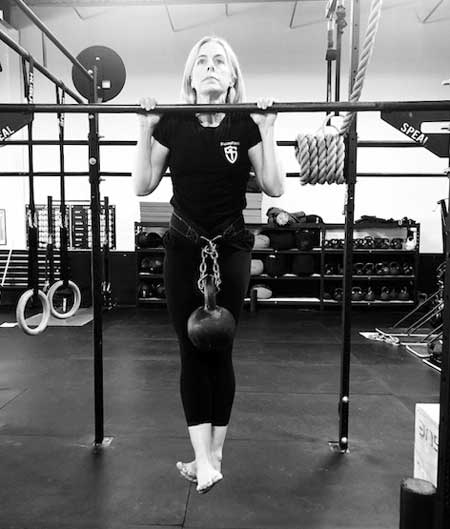
How would you encourage someone who isn’t sure they can do a bodyweight pullup, let alone a weighted one?
That was exactly me when I started! Now, I’m a 43-year-old, busy mom of three who can do a pullup with a 36kg kettlebell. StrongFirst has enabled me to discover what my body is capable of, and it can do the same for you. If you follow a path, commit to doing the hard work, and are patient, you can get to wherever you want to be. And you’ll learn a lot of valuable lessons along the way.
The best place to start? Well, that’d be at the beginning. I strongly suggest a one-day bodyweight course to learn the skill of tension. If you’re already a fitness professional (or an experienced bodyweight enthusiast), then the SFB certification is for you. You’ll learn all the skills you need for your eventual heavy pullup.
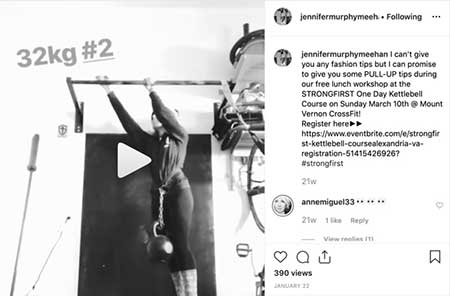
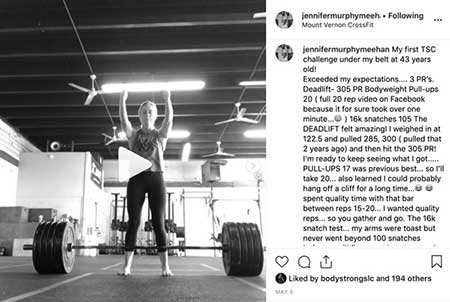
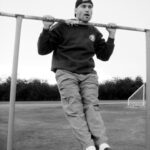

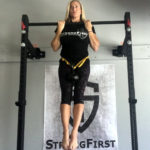
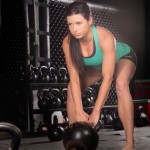

Great article and great job.
Thank you for taking the time to read this article!
You inspire me!
Thank you so much!
Thanks, Jen, for a very inspiring article!
May I ask what your pullup-specific warmup would be on your heavy day (when you do a total of ten weighted pullups)?
Hi,
Great question! I do a few body weight pull-ups to get my set-up and mind ready to pull. Then I will do 1-2 reps with a 18k or 20k before I begin the 10 rep series.
Take Care,
Jen
Thanks for taking the time to read the article!
I usually do a few body weight reps to go over my set-up and get the mind ready to pull heavy. Then I will warm-up with a few reps with a 18k or 20k.
Thanks!
Jen
Thank you for taking the time to answer my question! All the best.
My word, how inspiring!
Either you have incredible genetics to be so strong at your weight and age, or you are a case study for what any human can do through an intelligent approach.
All the very best to you!
Rob
Rob thank you so much for your kind words! Appreciate it!
Excellent work and a very well written article.
Steve,
I appreciate the time you took to read and comment. Thank you!
Jen
Good concise article with sound advice.You are one strong athlete.
Thank you very much! Appreciate you taking the time to read the article.